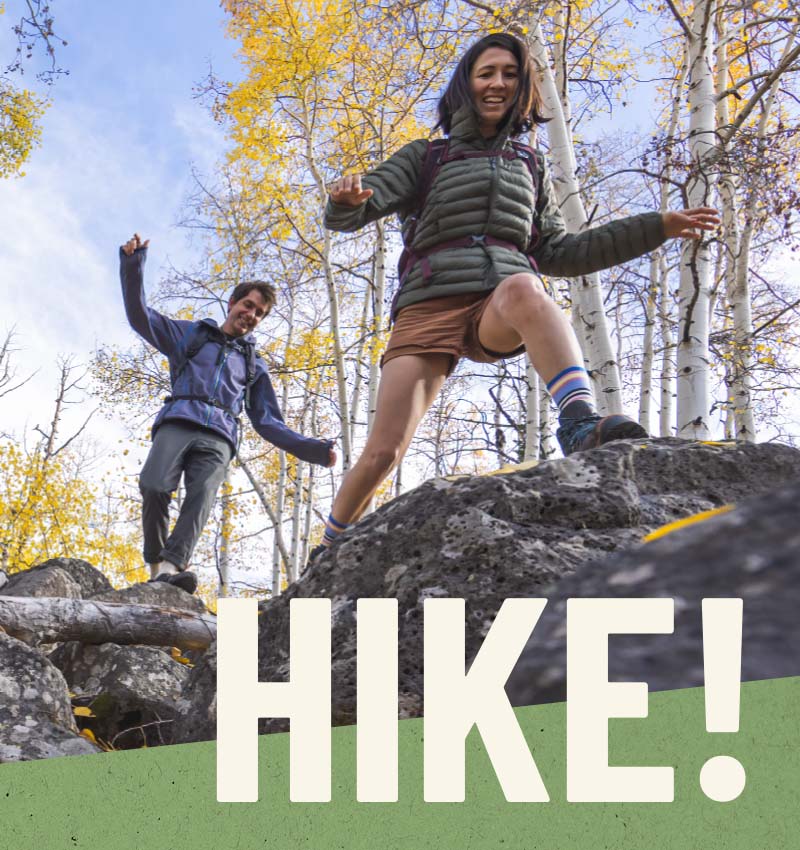Without the right winter cycling clothes, cyclists are at an increased risk of illness and injury, not to mention a pretty miserable ride in the cold and wet conditions. Thankfully, you can make winter cycling safer and more enjoyable by dressing for the expected weather.
Keep reading to learn the four best tips to staying warm with the proper winter cycling clothes.
4 Tips For Staying Warm With Winter Cycling Clothes
-
Keep Your Core Warm
One important question to ask yourself when choosing your winter cycling clothes is, “Will this keep my core warm?” Here’s why it matters:
When your core temperature drops below a normal level, your body’s natural defense is to halt blood flow to the extremities to preserve heat for your most vital organs. Without the right winter cycling clothes to keep your core warm, you risk losing body heat necessary for proper blood flow, in turn negatively impacting your ride and possibly your health.
Set the foundation for a safe and warm ride by wearing base layers with thermal and insulating properties. Being the article in closest contact with your skin, your base layers should be breathable enough to wick away sweat while also offering adequate chest and neck protection. Layer with a second thermal layer, like a brushed fleece jersey.
Just like wearing too thin of layers can leave you feeling chilled, wearing layers that are too warm, or lacking breathability, can cause you to overheat as your heart rate increases throughout your ride. A perfect layering option over your jersey that will also keep your core warm without trapping in excess heat is a vest. Vests range in thickness, style, and capabilities, so choose this layer wisely based on the conditions and temperature outside.
-
Wear Sweat-Wicking Layers
Whether you’re overdressed or you’re really cycling up a storm, your body’s natural response to maintain its core temperature is to expel heat through sweat. Without sweat-wicking winter cycling clothes, you are likely to experience pools of sweat around your body. Coupled with riding at speed through wind and cold temperatures, your core temperature is more likely to drop and, well–we know what happens then.
Just like it’s important to dress in warm and breathable layers, it’s important to make sure those layers are sweat-wicking from head to toe. Synthetic fabrics made of polyester or merino wool provide excellent sweat and moisture-wicking properties to prevent the pooling of sweat and a drop in body temperature. Choose from lightweight, midweight, and heavyweight styles depending on the elements you plan to ride in.
-
Fend Off the Elements
Dressing for the ride happens in layers. While your innermost layers should be breathable, insulating, and wick away sweat, your outermost layers should fend off the elements, whether it be rain, snow, or wind. A packable jacket, gloves, and with waterproof or wind-fighting properties will help reduce any wetness or windchill you are bound to experience on your winter rides.
-
Support the Extremities
Because blood flow to the extremities is reduced in the cold and while exercising, keeping them warm while winter cycling can be a challenge–unless you have the right attire. Quality gloves, socks, and shoe protection are a must-have if you want to perform your best.
While the go-to for cozy, sweat-free toes is typically men’s merino wool cycling socks and merino-wool women’s cycling socks, gloves come with a few more aspects worth paying attention to.
Not only do your gloves need to be well insulated and breathable to keep your hands warm, they must adequately fend off the elements, all without compromising dexterity. A sleek pair of merino gloves with an extended cuff will provide full protection without compromising dexterity or warmth. In wet, windy, and cold conditions, gloves with a wind and waterproof membrane are well worth your while. These days, it’s easy to get your hands on a technical pair of gloves that account for all of these factors, so take your time finding the right glove for your ride. You’ll be glad you did!
Feet are the furthest extremity from your chest, which can make it harder for your body to keep them as warm as the rest of your body–especially if the wintry conditions get to them. Aside from wearing merino-wool socks, slipping on some weather-resistant shoe covers can help keep your shoes and feet from suffering any more than necessary. You may also choose to preheat your shoes before heading out the door.
Enjoy Every Ride with FITS®
No matter where your winter cycling adventures take you, improve your odds for a safe and enjoyable experience with the right winter cycling clothes. When the seasons change and your outdoor adventures take a new turn, FITS® has the men’s and women’s socks designed to go the distance with you. Shop FITS® today to discover the difference well crafted socks can make in the way you explore all of life’s terrains.


